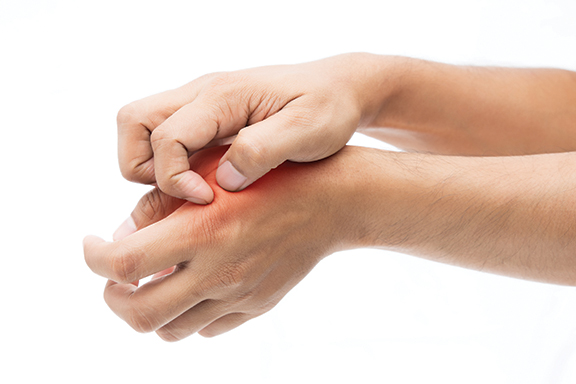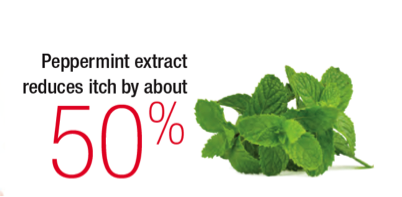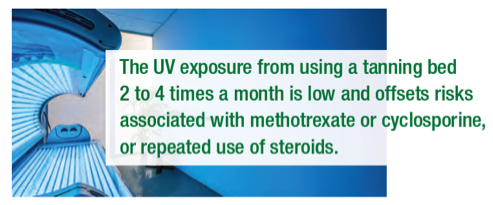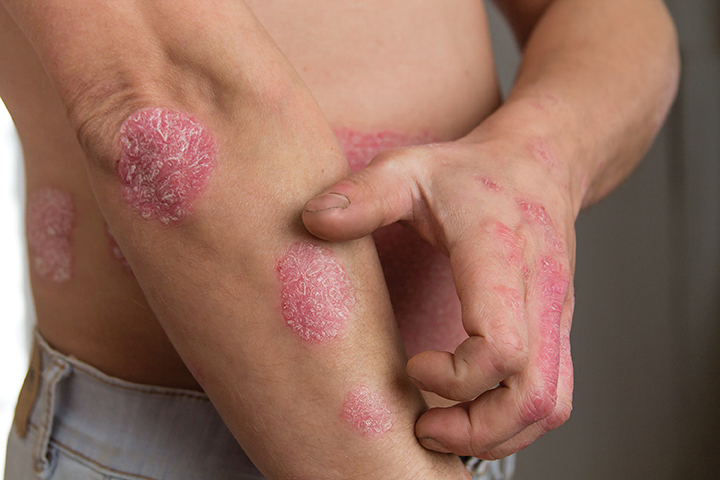By Lisette Hilton | Reviewed by Matthew J. Zirwas, MD
These little-known itch solutions will be inexpensive and simple additions to your treatment arsenal.
Clobetasol and CeraVe to reduce steroid’s effects
Dermatologist Matthew J. Zirwas, MD, director of the Ohio Contact Dermatitis Center in Columbus, combines 50 ml clobetasol solution into a 16-oz jar of CeraVe. The combination makes a 0.005% clobetasol cream, with no significant allergens in the vehicle. It’s a medium-to-high potency, or class 3, steroid that overcomes barrier impairment associated with short-term steroid use.
Dr. Zirwas started using the combination about 15 years ago after reading studies that included one published in 2003 in the Journal of Investigative Dermatology (https://pubmed.ncbi.nlm.nih.gov/12603860/) in which researchers concluded: “… even short-term exposure to potent glucocortico-steroids can exert profound negative effects on cutaneous structure and function […] topical replenishment with epidermal physiologic lipids could represent a potential method to reduce the adverse cutaneous effects of both topical glucocorticoid treatment and Cushing’s syndrome.”1
What most dermatologists do not know about steroids is the most important clinically relevant side effect is not skin thinning; rather, it’s a dramatic reduction in intercellular lipid production in the epidermis, according to Dr. Zirwas.
“The only thing that has ever been shown to reverse that effect is ceramides,” he said.

The other benefit of Dr. Zirwas’ clobetasol/CeraVe combination is it avoids propylene glycol and other common allergens that cause allergy to topical steroids.
“The combination is about as close as one can get to the perfect topical steroid because it doesn’t have any of the common allergens, it’s medium- potency with a wide range of utility, and it prevents barrier impairment. The only thing that might be even better—and this is not something I do regularly because of cost—is using desoximetasone topical spray, 0.25%, instead of the clobetasol,” he said.
The only time Dr. Zirwas doesn’t use the clobetasol/CeraVe combination is when patients need a class 1 steroid for a localized area of severe disease.
“In that situation, I typically use clobetasol scalp solution alone. That’s because it’s the only inexpensive class 1 steroid formulation that does not have propylene glycol,” he said.
L-histidine for atopic dermatitis
Patients love using l-histidine, a component of natural moisturizing factor, because it’s dietary and natural, according to Dr. Zirwas.
“It has been shown that 4 g a day of l-histidine pretty dramatically increases the body’s filaggrin and natural moisturizing factor production. In mild-to-moderate atopic dermatitis, people get about 30% better. That was in a randomized, double-blind, placebo-controlled trial (https://www.dovepress.com/eeding-filaggrin-effects-of-l-histidine-supplementation-in-atopic-der-peer-reviewed-article-CCID), so we have great data. And it’s cheap—about $20 a month on Amazon,” he said.2
Be sure to tell patients to buy l-histidine HCL and not histidine base. The recommended dose is an eighth of a teaspoon daily, which is 500 mg. But patients with atopic dermatitis need 4 g, or 1 teaspoon, daily, he said.
“The biggest problem with it is it tastes terrible. Probably the best feedback I’ve had from patients is to dissolve it in apple juice,” Dr. Zirwas said.
Peppermint extract: tried and true
Researchers reported in a study published in 2016 in Clinical, Cosmetic and Investigational Dermatology (https://www.dovepress.com/effectiveness-of-topical-pep-permint-oil-on-symptomatic-treatment-of-ch-peer-reviewed-article-CCID) that peppermint extract reduces itch by about 50%.3

Dr. Zirwas recommends that patients order a 1-oz bottle of peppermint oil and mix it into 16 oz of moisturizer, which makes close to the 5% strength that was shown to be effective. Or patients can buy peppermint extract in the spice section at the grocery store. The extract is one-quarter the strength of the oil. Dr. Zirwas recommends patients mix in 2 oz of peppermint extract into 16 oz of moisturizer because 4 oz makes the moisturizer too runny. Patients still get results from the extract-moisturizer combination, he said.
Intramuscular Kenalog
Consider that 40 mg intramuscular Kenalog (Bristol-Myers Squibb) equals 50 mg prednisone, based on potency, but only 70% of prednisone is absorbed. So, 40 mg intramuscular Kenalog probably equals 60 mg prednisone.
“So, 40 mg of Kenalog a month is roughly equivalent to about 2 mg a day of prednisone. The ratio of itch relief to systemic steroid exposure is higher for Kenalog than for prednisone. The literature says that 2 mg a day of prednisone is incredibly safe. Do we really know that 40 mg of Kenalog is equivalent to 2 mg a day of prednisone in terms of side effects? No, we don’t. But that should be the case,” Dr. Zirwas said. “Clinicians have reported treating many patients with Kenalog given monthly or every 2 months. I’ve done that in patients for years. I have not seen steroid side effects except for solar purpura.” The cost for Kenalog is only slightly higher than the already low cost of prednisone, he pointed out.
Tanning beds aren’t all bad
Tanning beds aren’t all bad, according to Dr. Zirwas. For example, not all patients can make it to dermatology practices for in-office phototherapy, and tanning beds may be an alternative. Tanning salons tend to have more flexible hours for patients who work, and are less expensive than phototherapy in a dermatologist’s office, Dr. Zirwas said.

Dr. Zirwas uses this tanning salon regimen for some patients with atopic dermatitis or itch. He hasn’t had as good outcomes with psoriasis patients. He recommends patients go to tanning beds 3 to 5 times a week, for a total of 20 sessions during a course of 4 to 6 weeks. If they get dramatically better, he’ll have them cut down to once a week, initially. If they’re still improving, he’ll go down to once every 2 weeks.
The UV exposure from using a tanning bed 2 to 4 times a month is low and offsets risks associated with methotrexate or cyclosporine, or repeated use of steroids.
“If somebody needed to go twice a week to maintain the effect, that’s too much. I start to get nervous having anybody go twice a week, long term. If once a week gives them excellent control over their dermatitis, it’s a very reasonable thing to do,” he said.
Dr. Zirwas talks with patients about the increased risk of skin cancer with phototherapy versus risks associated with systemic medication. Dermatologists who recommend tanning bed use should do their homework by calling local chains and asking which beds have the most UVB.
“If [the chain] knows, recommend that one to your patients. If they don’t know, find another chain,” he said.
Getting beyond the tacrolimus burn
Tacrolimus is a good medication for itch that patients often don’t take because it can cause burning. This therapeutic alternative has more to do with how dermatologists prepare patients for what’s to come, so they don’t stop taking the drug. A significant part of the drug’s efficacy for itch is that it causes substance P release, just like capsaicin, but this means it also causes burning just like capsaicin.
“I tell patients that tacrolimus is not a steroid and is totally safe to use every day indefinitely (there’s tons of data to show that it doesn’t cause cancer). Then I tell them that if we’re really lucky, when they put it on the first time it’s going to burn horribly. If it burns, it means it’s going to work really well. The burning will last about 15 minutes, and each time you put it on it will be a little less intense and end a little faster. Typically, within 1 to 2 weeks, it won’t burn at all when you put it on,” Dr. Zirwas said. “I tell them to have an ice pack ready the first time they use tacrolimus, just in case we get really lucky and the burning is horrendous.”
Use this approach, said Dr. Zirwas, and it’s rare that patients will say they can’t use tacrolimus.
REFERENCES
1. Kao JS, Fluhr JW, Man MQ, et al. Short-term gluco-corticoid treatment compromises both permeability barrier homeostasis and stratum corneum integrity: inhibition of epidermal lipid synthesis accounts for functional abnormalities. J Invest Dermatol. 2003;120(3):456-64.
2. Tan SP, Brown SB, Griffiths CEM, et al. Feeding filaggrin: effects of L-histidine supplementation in atopic dermatitis. Clin Cosmet Investig Dermatol. 2017;10:403-411.
3. Elsaie LT, El Mohsen AM, Ibrahim IM, et al. Effectiveness of topical peppermint oil on symptomatic treatment of chronic pruritus. Clin Cosmet Investig Dermatol. 2016;9:333-338.
DISCLOSURES: Dr. Zirwas has ties with Abbvie, Arcutis, Asana, Aseptic MD, Avillion, Dermavant, Edessa Biotech, Fit-Bit, Foamix, Galderma, Genentech/Novartis, Incyte, Janssen, Leo, Lilly, L’Oréal, Menlo, Ortho Derm, Pfizer, Regeneron/Sanofi, Sol-Gel, and UCB.

